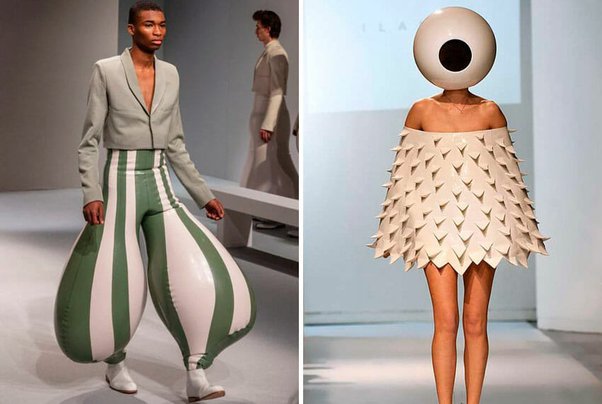Fashion is a form of art expressed in various ways, with shows being an important showcase of this expression. Within this universe, conceptual and commercial fashion shows stand out for their unique approaches. Understanding the differences between these two types of shows is essential for those who want to deepen their knowledge of fashion.
Conceptual shows are often seen as true works of art, while commercial shows are more focused on selling and popularizing collections. In this article, we will explore these differences in detail and understand the impact of each type of show on the fashion world.
Keep reading to discover the nuances that differentiate conceptual from commercial shows and how each plays a vital role in the fashion industry.
Definition of Conceptual Shows

Conceptual fashion shows are events that go beyond the simple presentation of clothes. They are created to convey an artistic, conceptual, or philosophical message. Designers use these shows to explore innovative ideas and express their creativity without market constraints. Conceptual shows are characterized by:
- Innovation and Experimentation: Garments that defy convention, using unusual materials, shapes, and techniques.
- Narrative and Thematic: Each show tells a story or explores a specific theme, often with strong symbolic content.
- Artistic Performance: The presentation itself is a performance, with elaborate sets, music, and even theatrical elements.
- Focus on Designer’s Vision: More than selling clothes, the goal is to communicate the designer’s artistic vision.
Definition of Commercial Shows

In contrast, commercial fashion shows are market-oriented. Their main goal is to promote and sell the season’s collections. Commercial shows focus on:
- Presentation of Seasonal Trends: Showcasing clothes and accessories that will be available for purchase.
- Accessibility: The pieces are designed to be worn by consumers, focusing on usability and commercial appeal.
- Marketing and Advertising: These shows are a marketing tool, attracting media and buyers’ attention.
- Practicality and Mass Production: Clothes that can be mass-produced and are readily available in stores.
Main Differences
When comparing conceptual and commercial shows, several main differences stand out:
- Objective: Conceptual focuses on artistic expression, while commercial focuses on sales.
- Design: Conceptual is innovative and experimental; commercial is practical and wearable.
- Target Audience: Conceptual attracts fashion critics and enthusiasts; commercial attracts buyers and mass media.
- Presentation: Conceptual is theatrical and narrative; commercial is straightforward and product-focused.
Notable Examples
Some conceptual and commercial shows have gained prominence over the years. Notable examples include:
- Alexander McQueen: Known for his conceptual shows that often shocked and surprised audiences.
- Chanel: Their commercial shows are iconic and always anticipated, showcasing elegance and sophistication that attract a global audience.
Impact on the Fashion Industry
Each type of show has a significant impact on the fashion industry:
- Conceptual: Influence future trends, inspire designers, and elevate fashion to an art form.
- Commercial: Set the season’s trends, drive sales, and shape the public’s perception of brands.
Conclusion
Conceptual and commercial fashion shows play complementary roles in the fashion industry. While one challenges and redefines the limits of creativity, the other connects directly with consumers and drives the fashion economy. Both are essential for the continuous evolution of the fashion world.
Frequently Asked Questions (FAQs)
- What characterizes a conceptual fashion show?
- Conceptual shows are characterized by innovation, thematic narrative, and artistic performance, focusing on the designer’s vision more than sales.
- What is the main goal of commercial shows?
- The main goal of commercial shows is to promote and sell the season’s collections, presenting trends and attracting media and buyers’ attention.
- How do conceptual shows influence fashion?
- They influence future trends, inspire other designers, and elevate fashion to an art form.
- What are the typical target audiences for conceptual and commercial shows?
- Conceptual shows attract fashion critics and enthusiasts, while commercial shows attract buyers and mass media.
- Why are both types of shows important to fashion?
- Conceptual shows challenge creativity and set new trends, while commercial shows connect directly with consumers and drive the fashion economy.



